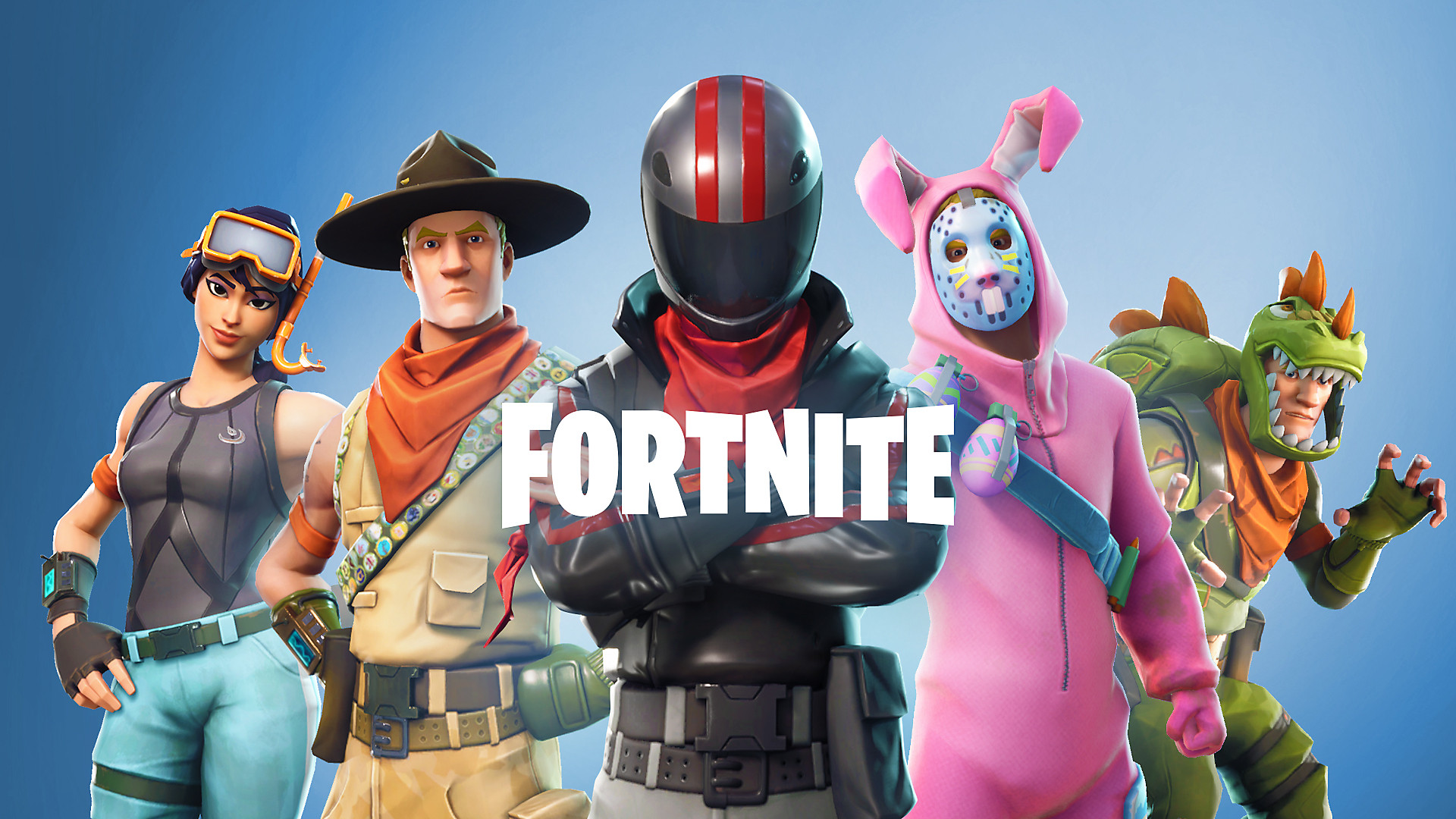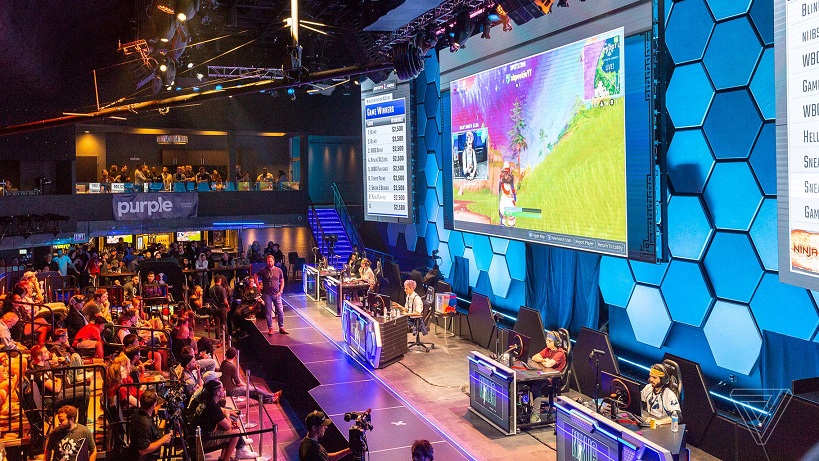Let us know what type of content you'd like to see more of. Fill out our three question survey.
Fortnite for International Development?
Sep 6, 2018
Fortnite—a free, online multiplayer video game—has amassed more than 125 million players worldwide during the mere 14 months since it debuted in July 2017. The game features a fast-paced, Hunger Games-inspired format mixed with community, celebrity, and story, and so far it’s working. Everyone from athletes to musicians are going public with their fandom and some parents are shelling out $35/hour for a Fortnite coach for their kids.

Image © 2018, Epic Games.
Given the game’s Kool-Aid man-like explosion into the popular consciousness, global development practitioners—especially those whose work involves raising awareness or encouraging behavior change, which I suspect is most of us—should be paying close attention. One-hundred and twenty-five million people—the vast majority between the ages of 18 and 24—are now spending significant time in Fortnite world, when a few months ago they had probably never heard of it. Not only does the game represent competition for their attention at school, it’s competition for their attention to the apps, websites, workshops, campaigns, and digital tools that development projects spend thousands of dollars putting together!
Now, let’s face it: We’re never going to beat the Fortnites and Facebooks of the world for people’s attention. They’re built on cognitive addiction research and have that massive budgets that allow them to collect user feedback, iterate, and rapidly improve. But, we can ensure our messaging stays relevant and “meets them where they are,” by thinking about how to use these platforms to our advantage.
I’ll spare you the Facebook for development primer, and let’s put aside the broader questions around screen time and violence in video games. These issues are important; but I’d like to take it as a given that that young people are choosing to spend their time with Fortnite and explore what we can learn from its rise to mass popularity, and how development projects and social causes might take advantage of it. A few ideas:
1. Build a new Fortnite with more positive messaging.
Fortnite itself is a knock-off of two other similar games—H1Z1 and PlayerUnknown’s Battlegrounds—so building a new version about development themes should be an easy way to capture young people’s attention, right? Wrong. Two problems: First, building a video game is not like building an app or a website. Not only do you need a game concept that’s fun (check), you’ll need a massive budget for beta testing, user experience improvements, incorporating the social message, and stamping out bugs. And even if you’re able to build a fun, effective game, will anyone care? This brings us to problem #2: Epic Games, the maker of Fortnite, is spending $100 million on prize pool money for tournaments alone, and that’s not even their full marketing budget. Try competing with that…
2. Partner with developers to create new content for Fortnite with socially focused messaging.

Blizzard Entertainment's pink skin for the Overwatch character Mercy raised millions for the Breast Cancer Research Foundation.
This is a blended approach that takes advantage of a popular pre-existing brand and delivers key messages to that audience in a way that is consistent with that brand. For example, the action game Overwatch recently featured new purchasable content, a pink-themed skin for one of the game’s 21 characters, to raise money for breast cancer research. The game’s developer, Blizzard Entertainment, raised nearly $13 million though the promotion—not bad! Elsewhere, I saw a very interesting story about the United Nations working with Mattel Inc., the producers of the “Thomas the Tank Engine” show for kids, on incorporating the Sustainable Development Goals into scripts so young people hear messaging on the importance of “education, sustainable communities, responsible consumption, gender equity and… healthy ecosystems.” Creating blended content is a fantastic way to get your message to a broader community, but getting developers’ attention can be difficult, given that they tend to be small operations (games scale well!) and may not consider social initiatives worth their time, or an acceptable brand risk. Would Epic Games be interested in spreading the good word about transparent governance or the importance of washing hands through Fortnite? Let me know if you’ve got a contact there; I’d love to inquire!
3. Purchase advertising space in Fortnite to deliver key messages.
This is often the easiest, most accessible and least risky of all options. The cost of advertising through web platforms is priced to be reachable for most organizations, it’s just a matter of choosing your intended audience and how often you’d like them to see your message. Facebook and Google have boiled targeting down to a science and their ad networks are user friendly and inexpensive. So, when will we see the debut of the Fortnite ad network? It’s difficult to say. Fortnite doesn’t allow advertising from outside sources; the firm has chosen to forego that revenue stream in favor of a more cohesive, controlled world. In short: They don’t want to lose you to the rest of the web once they’ve got you; they want players in-game as long and as much as possible, because game time drives revenue. But keep an eye out, that might change as time goes on. Ad-free web platforms (which Facebook and Twitter used to be) tend to reconsider their stance once the potential to ramp up profitability becomes clear.
4. Host live Fortnite Tournaments featuring key social messages.

Photo by Nick Statt of The Verge, for article 'Ninja’s Fortnite tournament was an exhilarating and unprecedented e-sports experiment'
Epic Games has hosted a series of live events to build excitement around the game. The Fortnite Pro Am 2018 featured 50 professional Fortnite players, matched up with 50 celebrity gamers, and was held at a 22,000-person open-air stadium in Los Angeles. The event also raised $3 million for charity, though it hasn’t been made clear in the aftermath exactly which charities or causes received that funding and from whom. There are also dozens of smaller-scale Fortnite tournaments happening around the world, so why not host a Fortnite tournament and include key messages about environmental protection or sexual health? It’s not a bad idea, but of course there are some challenges. Events are expensive, and they require logistical coordination and lots of promotion; generally it’s best if a local organization or university handles those aspects. Still, as with the Fortnite Pro Am, it’s easy for key development messages to get lost in the din, especially when the din is Fortnite, so figuring out the right message and delivery is key.
When will we be using Fortnite for international development? It’s difficult to say, but what’s clear is that the game has captured the attention of a huge number of the people around the world incredibly quickly. Taking note of that rapid rise, and thinking about how we can use it and other cultural phenomena in our work as development professionals can only make us more effective.
For more on the nexus of culture and international development, subscribe to Digital@DAI.